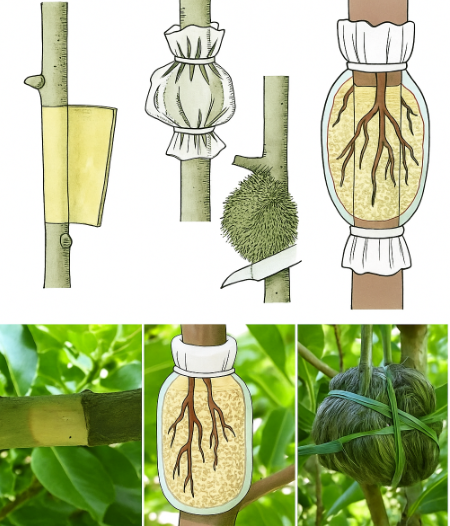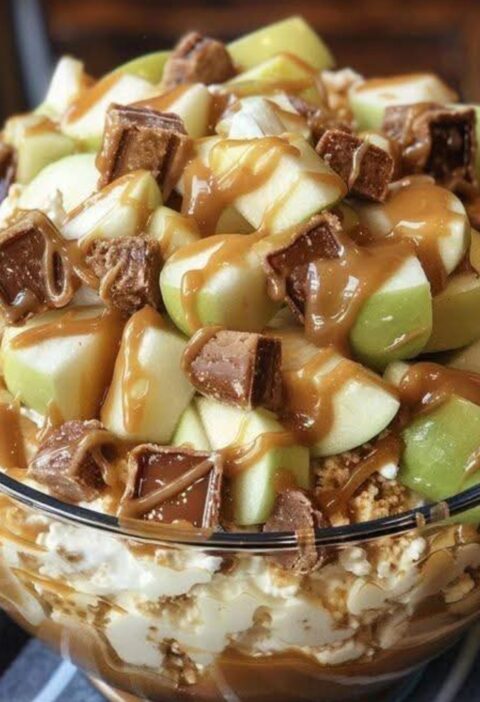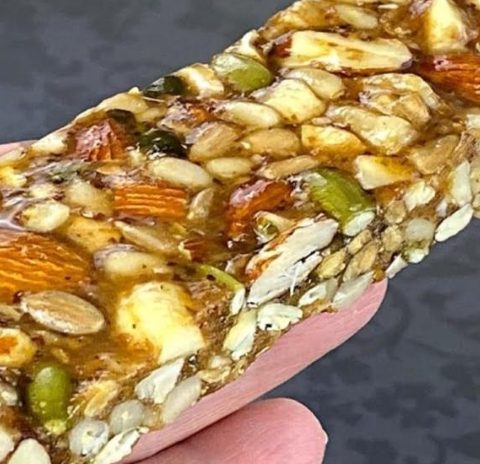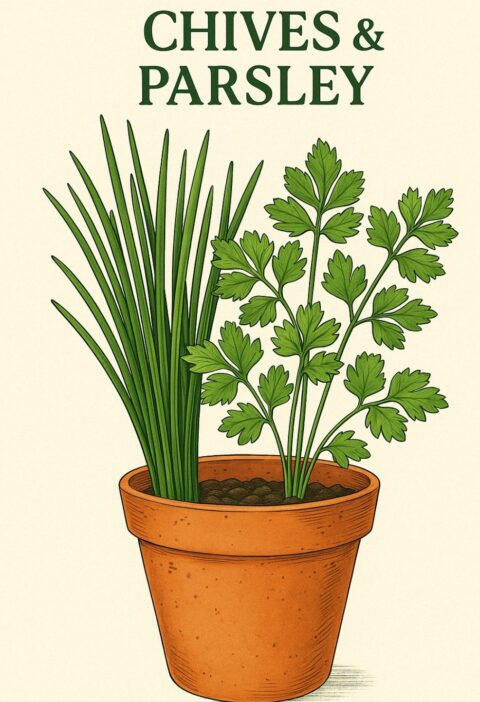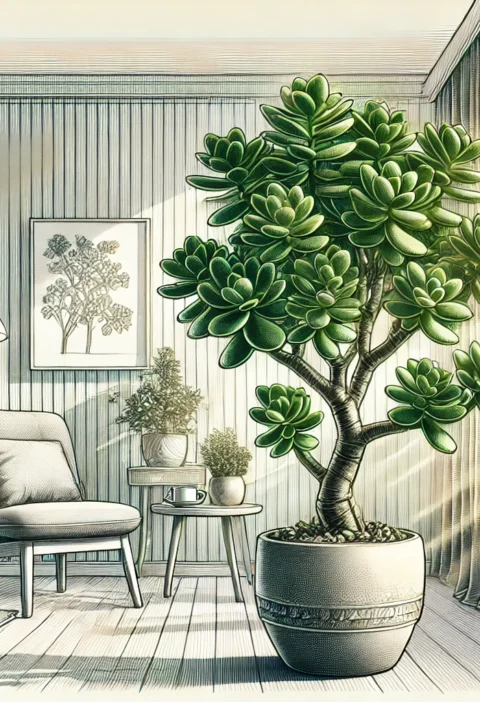👨🌾🌱 Master Air Layering: A Complete Guide to Effortless Plant Propagation
Looking to multiply your favorite shrubs, trees, or vines without seeds or cuttings? Air layering is a centuries-old horticultural technique that lets you coax new roots on a branch while it’s still attached to the mother plant. With minimal tools and a little patience, you can create robust, ready-to-plant clones of plants that are otherwise difficult to propagate. In this comprehensive guide, we’ll cover everything you need to know—from selecting the perfect branch to nurturing your new plant in its first season—so you can fill your garden with healthy, genetically identical offspring.
🔍 What Is Air Layering & Why Use It?
Air layering is a form of vegetative propagation where roots are induced to form on a section of stem while it remains attached to the parent plant. Once roots are established, the branch is severed and potted up as a self-supporting specimen. This method offers several advantages:
- High Success Rates: The branch continues to receive water and nutrients during rooting, reducing transplant shock.
- Faster Maturity: New plants are mature clones and flower or fruit more quickly than seedlings.
- Ideal for Difficult Species: Works well on woody shrubs and trees that resist cuttings (e.g., magnolia, fiddle-leaf fig, camellia).
🏆 Benefits of Air Layering Compared to Other Propagation Methods
| Method | Time to Roots | Success Rate | Plant Maturity | Ideal For |
|---|---|---|---|---|
| Air Layering | 4–12 weeks | 80–95% | Rapid (flowering in 1–2 years) | Woody perennials, trees, vines |
| Softwood Cuttings | 2–4 weeks | 50–70% | Moderate | Herbaceous perennials, shrubs |
| Seed Propagation | Varies | 30–80% | Slow (years to maturity) | Annuals, vegetables, trees |
✂️ 5-Step Air Layering Process
1. Branch Selection
- Choose a healthy, flexible branch free of disease, ideally 30–60 cm from the tip.
- Ensure the branch has several leaf nodes—roots will emerge from these nodes.
- Avoid overly vigorous or very young shoots, which may fail to root.
2. Branch Preparation
- Make a clean, diagonal cut through the bark about 1–2 cm long.
- Carefully remove a ring of bark and underlying cambium (about 1–2 cm wide) to expose the inner wood.
- This “girdle” encourages cell dedifferentiation and root primordia formation.
3. Apply Rooting Hormone (Optional but Recommended)
- Dust or brush a small amount of commercial rooting hormone powder onto the exposed wood.
- Hormone accelerates rooting and improves success rates, especially on recalcitrant species.
4. Wrap & Protect
- Moisten a handful of sphagnum moss or organic sawdust until damp but not dripping.
- Pile moss around the wound, then cover with clear plastic sheeting or a plastic bag.
- Seal both ends with twist ties, wire, or waterproof tape—this retains moisture and allows air circulation.
5. Wait & Check
- Roots develop over 4–12 weeks, depending on species and conditions.
- Periodically open one end of the wrap to check root formation—look for white, fibrous roots.
- Once roots are at least 5 cm long and well-branched, cut the branch below the new root ball and pot up immediately.
🌟 Pro Tips for Air Layering Success
- Best Timing: Early spring to early summer when sap flow is active.
- Sanitize Tools: Use sharp, clean pruning tools dipped in rubbing alcohol to prevent disease.
- Maintain Moisture: Keep moss consistently damp; check weekly and rehydrate if needed.
- Shade & Ventilation: Partial shade reduces heat stress under plastic; poke small holes if overheating.
🪴 Aftercare for Your New Plant
- Pot into a well-draining mix (peat-based with perlite).
- Keep in bright, indirect light and maintain even moisture for the first month.
- Gradually acclimate to outdoor conditions if planting outside—hardening off over 7–10 days.
- Fertilize lightly after 4–6 weeks to support new root and shoot growth.
⚠️ Common Pitfalls & Troubleshooting
- No Roots After 8 Weeks: Rewrap with fresh moss and hormone; ensure moisture levels are correct.
- Rotting Moss: Indicates poor drainage or overheating—replace with fresh moss and improve ventilation.
- Scar Tip Dieback: Remove any wilting tip above the layer to conserve energy for rooting.
🌱 Best Plants for Air Layering
- Ornamentals: Ficus (rubber plant), magnolia, camellia, gardenia.
- Fruits: Apple, citrus (lemon, orange), guava, grapevine.
- Woody shrubs: Rhododendron, hydrangea, holly.
🔎 FAQs: Voice-Search Optimized Questions & Answers
Q1: What is air layering and how does it work?
A: Air layering is a plant propagation method that induces roots on a live branch by wounding the bark, applying rooting medium (like moss), and wrapping in plastic to keep it moist. Roots form on the branch, which is then cut and potted.
Q2: When is the best time to do air layering?
A: For most species, early spring to early summer (just before or during active growth) is ideal. Warm temperatures and sap flow encourage rapid root formation.
Q3: Do I need rooting hormone for air layering?
A: While optional, rooting hormone significantly increases success rates—especially for stubborn or slow-rooting species. Apply to the exposed cambium before wrapping.
Q4: How long does it take for roots to form?
A: Typically between 4 and 12 weeks, depending on plant species, environmental conditions, and care. Check periodically through the plastic for root development.
Q5: Can I reuse the same branch if layering fails?
A: Yes—if the branch remains healthy, you can re-slice the bark, apply fresh hormone and moss, and rewrap. Ensure the medium stays moist.
Q6: How do I transplant my air-layered branch?
A: Once roots are at least 5 cm long, cut below the root ball, pot into a free-draining container, water thoroughly, and keep in indirect light until established.
Q7: What moss should I use for air layering?
A: Sphagnum peat moss is preferred for its moisture retention and aeration. You can also use coco coir mixed with perlite.
Q8: Will air layering work on indoor houseplants?
A: Absolutely—many tropical houseplants like rubber tree (Ficus elastica) and pothos can be air layered to create new specimens without cutting from the base.
Q9: Can air layering damage the parent plant?
A: If done correctly—with a clean wound and proper care—air layering causes minimal stress. Always monitor the parent branch for signs of disease or dieback.
Q10: Where can I learn more about advanced propagation techniques?
A: Explore these related guides on CanadianEdShop:
- Softwood & Hardwood Cuttings: Step-By-Step Guide
- Seed Starting 101: From Sowing to Seedling
- Greenhouse Growing: Essential Tips & Tricks
🔗 Related Articles (Internal Linking)
- Softwood & Hardwood Cuttings: Step-By-Step Guide
- How to Improve Garden Soil Naturally
- Organic Composting 101: Speed Up Decomposition & Reduce Waste
- 4 Homemade Natural Insect Sprays to Safely Banish Pests
- DIY Organic Cleaners for a Chemical-Free Home
🌟 Conclusion
Air layering is a powerful, reliable way to propagate hard-to-root plants and multiply your favorites without seeds or cuttings. By following our five-step process—selecting the right branch, making a precise wound, applying rooting hormone, wrapping with moisture-retentive moss, and patiently waiting—you’ll produce healthy, vigorous new specimens ready for potting. Combine this method with routine care and you’ll expand your plant collection faster than ever. Happy layering!
